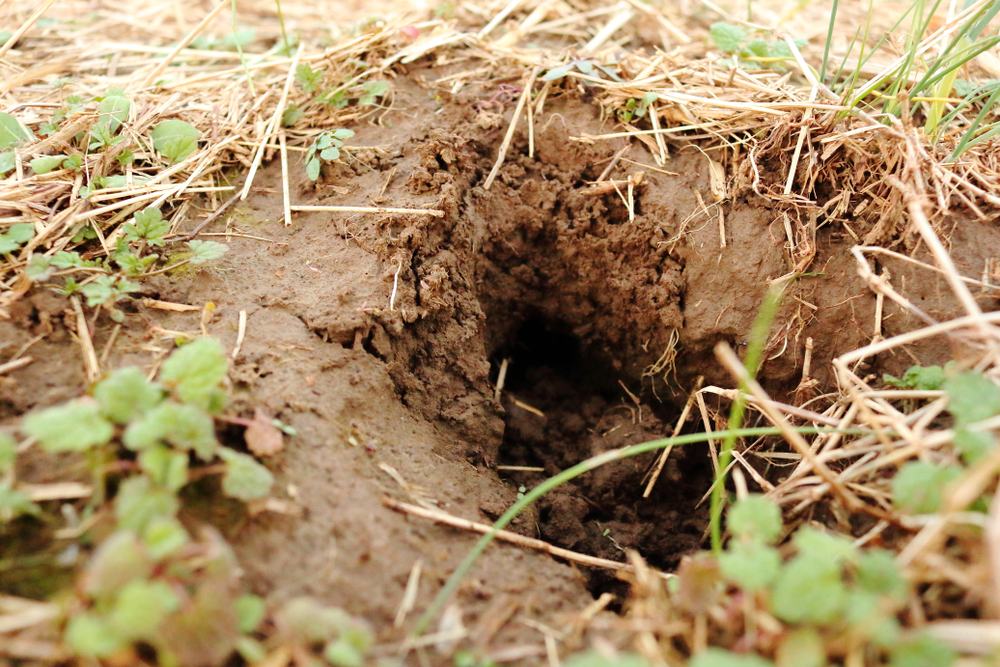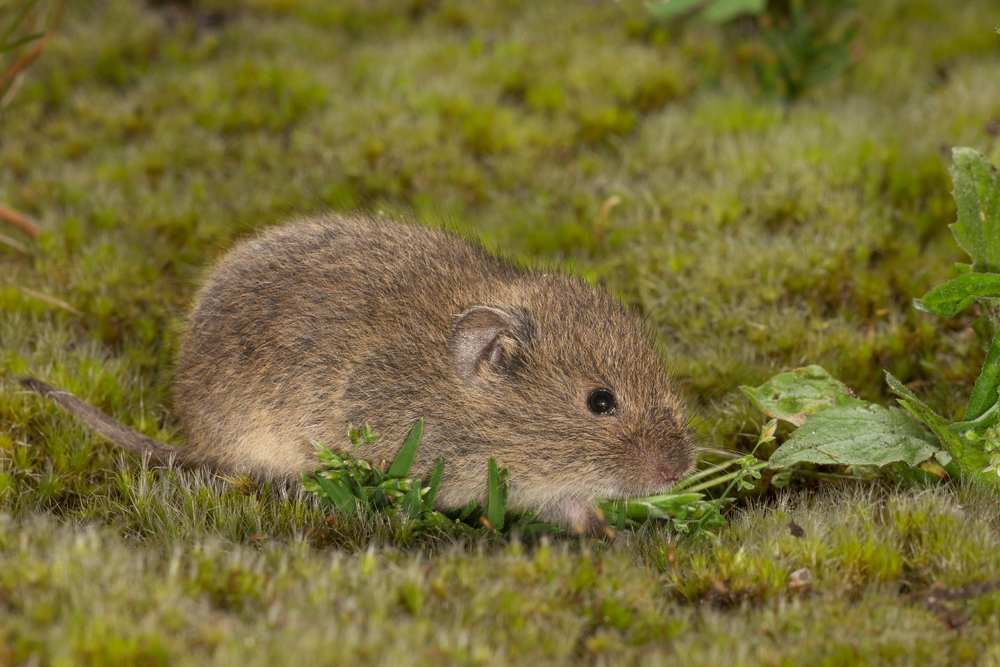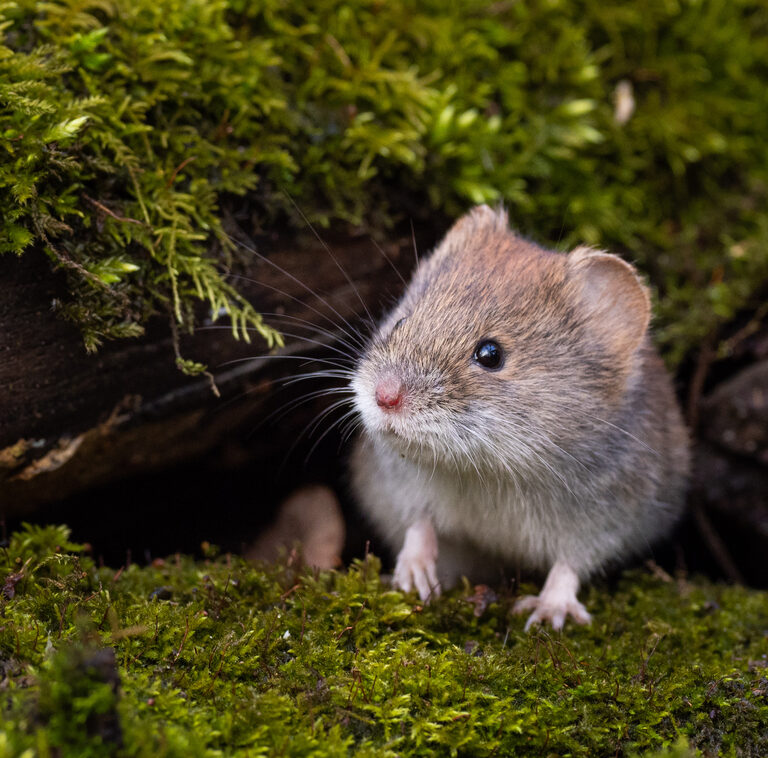When it comes to varmints that are capable of absolutely wrecking your lawn, voles don’t get the press they deserve. Most people couldn’t even tell you what a vole is, let alone identify them or their burrows on sight.
One thing’s for certain: voles need to fire their PR team.
If there’s another thing that’s for certain, though, it’s that you need to handle a vole problem as soon as you can, or else you’ll have to watch helplessly as they destroy your lawn.
Below, we’ll tell you exactly what to do to get rid of your vole problem, once and for all (unless you work in rodent PR, in which case your vole problem may just be getting started).
What the Heck Is a Vole, Anyway?
Voles are tiny little rodents. They’re often called “field mice” or “meadow mice.” They’re basically little wild hamsters that can demolish a lawn in just a few weeks.
These animals are small, as they’re usually only 4-8 inches long and only weigh a few ounces. Most of them are gray or brown, and they’re incredibly fast.
Voles have prodigious appetites, and they often consume their entire body weight in food every day — and their favorite foods are grass, vegetables, and flower bulbs. They’ll also gnaw on tree bark, but only at the base of the tree.
They can also destroy lawns and gardens by burrowing underneath them. If you notice your trees or shrubs are starting to lean, it may be due to vole tunnels.
How to Prevent Voles From Taking Control
It’s important to remember that voles are in your lawn for a reason: it’s nice there and there’s lots of free food on hand. As a result, the techniques for keeping them out are going to be very similar to the techniques for removing them once they’re already established.
We’ll first look at tried-and-true prevention methods; while these are designed to stop voles from gaining a foothold in your lawn in the first place, many of them are also effective for getting them to leave.
Keep Your Lawn Clean
Voles are small creatures, and if there’s one thing that nature has taught us, it’s that virtually everything in the world likes to eat small creatures. As a result, voles like to stick to areas where there’s lots of dense vegetation — it offers them cover from predators like birds, snakes, and cats.
If you cut back weeds, brush, and other vegetation, it will leave your lawn clear and exposed. Also, remove any piles of wood or other debris where little pests could hide.
Voles don’t like areas where they’re exposed, so they’ll skip your lawn in favor of your neglectful neighbor’s. Not only will this cut down on your vole problem, but it will also reduce other pests like spiders and termites — and it will also make your lawn look much more attractive.
Take Down Bird Feeders
Voles like many of the same foods that attract birds, so if you have a bird feeder set up, you’ll likely find yourself hosting voles as well. You may need to take down the feeders to keep the voles out.
Another option is to replace your feeder with a rodent-proof model. These are much harder for animals like voles and squirrels to get into, so they’ll soon give up, leaving the seeds behind for your bird friends.
Then again, if you truly want to be heavy metal about it, you can leave the feeders out and watch as hawks pick off the voles as they peek into the feeder for a snack.
Install a Fence
A mesh fence is an excellent way to keep voles out — provided you set it up properly, of course. These animals are dedicated little diggers, so you’ll need to bury that fence at least a foot underground to keep them at bay.
You don’t have to go crazy with the fencing, though. They aren’t big on climbing fences, so it only needs to be a foot or so high to keep them out.
Prevention Starts With Pee
Given that voles make a tasty snack for so many other animals, they’re naturally skittish. You can use this to your advantage by sprinkling coyote or fox urine around the perimeter of your lawn.
If you don’t have a coyote or fox handy that you can squeeze, you can buy predator urine online or at some home improvement or sporting goods stores. Then again, human urine is almost as effective — just make sure your neighbors aren’t standing by their windows before you start your application.
4 Ways to Get Rid of Voles

If you’ve determined that you have a vole problem, you’ll need to take action to stop the destruction.
You should understand, though, that it’s much easier to prevent voles from getting into your garden than to get rid of them once they’ve established squatter’s rights, so these methods may not be as effective as the prevention techniques listed above.
1. Set up Traps
If you have a smaller infestation, it may be possible to trap all the offending individuals. There are a variety of rodent traps that are capable of snagging voles, so you shouldn’t lack for options.
Many voles love peanut butter, making it a cheap and effective bait. Set the traps perpendicular to the largest burrows, and place them in the early evening when the voles are most active.
You should only buy traps that capture live voles rather than ones that kill them. Not only is catch-and-release more humane, but it’s illegal to kill voles in many areas, so it keeps you out of a scary metal cage, too.
2. Napalm Their Burrows
No, you shouldn’t use actual napalm — napalm is rarely recommended for home improvement projects. Instead, use the natural equivalents: cayenne powder, castor oil, ammonia, garlic, or nitrogen fertilizer.
Pour or spray these into their burrows. Voles won’t be able to handle the irritation, and they’ll opt to relocate.
This method works best when combined with some of the prevention techniques we mentioned earlier. After all, you don’t want them to leave their burrow only to build a new one somewhere else in your yard.
You may have to repeat this technique several times before it finally works, and you’ll have to reapply the irritants after a rain.
3. Poison Them
We feel this should be something of a last resort, as we never like to kill things unless we have to. Also, using poison baits can backfire if a child or, God forbid, a pet should eat them.
There are plenty of poison baits available that kill voles, so pick the one that works best for you and your situation. Put the bait deep inside the burrow so that only the voles will eat it; while this isn’t a foolproof way to protect your pets, it does reduce the risk that they’ll become collateral damage.
Speaking of your pets…
4. Turn Your Cat, Dog, or Attack Owl Loose
This is another not-quite-humane option, but remember how large animals like to eat voles? You may have some large animals living in your home already.
Dogs and cats are extremely effective predators, and if you let them, they can munch their way through your vole population in no time.
While your pet will likely love this technique, we’re not fans of it. Not only is it barbaric, but voles carry a variety of diseases that your pet can catch — and possibly even spread to you. You’re better off keeping them as far away from the little pests as possible.
Another option is to set up owl nest boxes in your trees. These encourage owls to take up residence, so they can do your dirty work for you — and since you’re not emotionally attached to the owls, you don’t have to worry about them catching something from the voles.
Is That a Vole Hole or a Mole Hole?
Voles are often confused with moles, another incredibly destructive pest. However, the two animals have very little in common.
Moles aren’t rodents, and they don’t eat plants. Instead, they feed on earthworms and other small insects they find underground. They have no interest in your lawn or garden.
They can still damage it by burrowing underneath it, though. Unlike voles, however, they don’t leave burrows all over your lawn — instead, they create tiny little hills when they pop up to the surface occasionally.
You still have a problem if you have moles in your backyard. Unless you see little snake-like burrows, though, you at least don’t have a vole problem.
Final Thoughts

While voles may be tiny little creatures, they can be a big problem for your lawn. The tips above should help you solve your vole problem once and for all, so that you can finally restore your yard back to its former glory.
Best of all, though, some of these techniques give you a great excuse for when your HOA calls you to talk about the reports that you’ve been peeing in your backyard.
